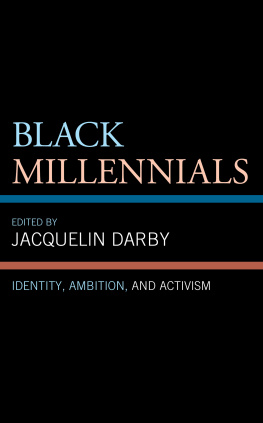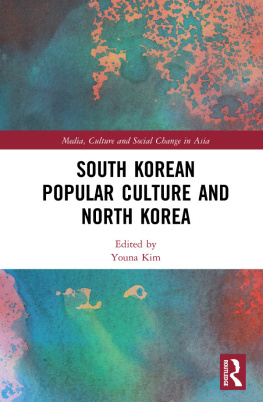ROUTLEDGE LIBRARY EDITIONS: HUMAN GEOGRAPHY
Volume 17
THE GEOGRAPHY OF UNITED STATES POVERTY
THE GEOGRAPHY OF UNITED STATES POVERTY
Patterns of Deprivation, 19801990
WENDY SHAW
First published in 1996 by Garland Publishing, Inc.
This edition first published in 2016
by Routledge
2 Park Square, Milton Park, Abingdon, Oxon OX14 4RN
and by Routledge
711 Third Avenue, New York, NY 10017
Routledge is an imprint of the Taylor & Francis Group, an informa business
1996 Wendy Shaw
All rights reserved. No part of this book may be reprinted or reproduced or utilised in any form or by any electronic, mechanical, or other means, now known or hereafter invented, including photocopying and recording, or in any information storage or retrieval system, without permission in writing from the publishers.
Trademark notice: Product or corporate names may be trademarks or registered trademarks, and are used only for identification and explanation without intent to infringe.
British Library Cataloguing in Publication Data
A catalogue record for this book is available from the British Library
ISBN: 978-1-138-95340-6 (Set)
ISBN: 978-1-315-65887-2 (Set) (ebk)
ISBN: 978-1-138-95730-5 (Volume 17) (hbk)
ISBN: 978-1-315-66172-8 (Volume 17) (ebk)
Publishers Note
The publisher has gone to great lengths to ensure the quality of this reprint but points out that some imperfections in the original copies may be apparent.
Disclaimer
The publisher has made every effort to trace copyright holders and would welcome correspondence from those they have been unable to trace.
THE GEOGRAPHY OF UNITED STATES POVERTY
PATTERNS OF DEPRIVATION, 19801990
WENDY SHAW
Copyright 1996 Wendy Shaw
All rights reserved
Library of Congress Cataloging-in-Publication Data
Shaw, Wendy, 1951
The geography of United States poverty : patterns of deprivation, 19801990 / Wendy Shaw.
p. cm. (Children of poverty)
Includes bibliographical references and index.
ISBN 0-8153-2536-3 (alk. paper)
1. Rural poorUnited States. 2. PovertyUnited States. I. Title. II. Series.
HC110.P6S45 1996
362.5097309048dc20
96-42262
Printed on acid-free, 250-year-life paper
Manufactured in the United States of America
To my family; in memory of my father Ronald, to
my mother Elsie, and my children Shaw Green,
Fflur Green, Amanda Wallace, and Kassidy Zhou.
Contents
This book was written in response to some glaring gaps in research and writing that have become apparent since the mid 1970s. It was in the early 1970s that interest in poverty in the United States was at its zenith and numerous written works concerning poverty, including its geography, were produced. Despite the persistence and worsening of poverty, since that time povertys broad geographic dimension, its regional distribution and variation, has received comparatively little scrutiny. There has been little available detailed research concerning the geographic location of the poor in America and the analysis of regional variations in the extent and nature of poverty in the United states has been neglected. What recent research has been done on poverty within the United States has focused on national poverty levels, urban poverty, and the changing characteristics of the poor. Close attention has been given to particular segments of the population, and interest in poverty has largely focused on, and been confined to, the nature of urban poverty, its intraurban spatial dynamics, and the characteristics of the urban poverty population.
The poor outside large metropolitan areas have received minimal attention, yet the number of rural poor is substantial. The rural poor have become invisible, and rural poverty regions have been largely ignored within recent studies. Perhaps this is because there is an erroneous perception that the job of eradicating rural poverty has been substantially accomplished, and what is left is a mopping-up operation and a relatively relaxed wait for continued progress.
With this vacuum in terms of poverty research in mind this book seeks to address the following questions utilizing the spatial unit of the county.
1. What is the spatial distribution of the poor within the United States, and can distinct poverty regions be identified?
2. What are the concomitants of income poverty, and the general characteristics of the poverty population?
3. How do identified concomitants of income poverty and characteristics of the poverty population vary in importance spatially?
4. Have the spatial distribution of poverty, the concomitants of income poverty, and characteristics of the poverty population changed from 1980 to 1990?
offers some conclusions to be drawn from the research and discusses some possible policy implications.
It is hoped that this book will, in small measure, aid in understanding the nature and spatial distribution of poverty in the 1990s. This may be crucial as it appears likely that the welfare system faces major reconstruction with the establishment of a new political powerbase in Washington D.C. in 1995. The geography of poverty is a dimension of deprivation that cannot be ignored in an era of increasing demands for the most efficacious use of scarce tax dollars.
W.S.
Edwardsville, Illinois
I would like to thank Andrew J. Herod, Ikubolajeh B. Logan, Kavita K. Pandit, Clifton W. Pannell, and James O. Wheeler of the University of Georgia for their contributions and guidance during the production of this research. I am especially grateful to Kavita Pandit for her unfailing patience and support.
The Geography of United States Poverty
The United States is among the most affluent countries in the world. Despite this general affluence, it is clear that poverty remains a widespread problem (Gugliotta 1994). As we move toward the twenty first century the problem of poverty appears to be growing worse. In 1994 some 39.7 million people in the United States lived below the official poverty line.1 This represents the largest group of impoverished Americans since 1964, the year when an extensive campaign to address poverty was begun. Despite the fact that over 15 percent of the U.S. population lives in poverty, research on this topic has been surprisingly limited. However, a plethora of theory exists that, in some measure, seeks to explain the existence and growth of poverty amid general affluence within the United States.
Existing theory lays blame for poverty on a variety of causes. Some scholars contend that poverty is the natural result of variation in resource endowment or of the ups and downs of the business cycle. Thus, poverty is not a problem and should not be the target of intervention. A second group of theories sees poverty to be the result of individual actions and choice. The poor themselves are said to hold solutions to their own poverty and can escape impoverishment by changing their behavior. A third theoretical perspective asserts that the nature of society at large is the root cause of poverty. Discrimination on the basis of race, gender, and age are deeply entrenched in the fabric of American society; the result is rampant poverty among certain subsets of the population. A fourth body of theory suggests that the operation of government and major institutions leads to poverty for many Americans. Institutions are said to have failed or to be shelters of systematic discrimination. Government policy, especially in the area of welfare programs, is said to contribute, to rather than alleviate, the poverty problem. A final diverse group of theories sees poverty to be the result of the operation of the economic system. These theories do not see the operation of the economy as taking some natural form, but rather point to structural characteristics within the economic sphere which are the product of deliberate action. The shift from manufacturing to services, the move away from mass production toward flexible specialization, occupational segregation, the core-periphery sectoral nature of economic activity, change in the operation of the global economic system, and the general dynamic of capitalism are all posited as structural economic explanations of poverty.













